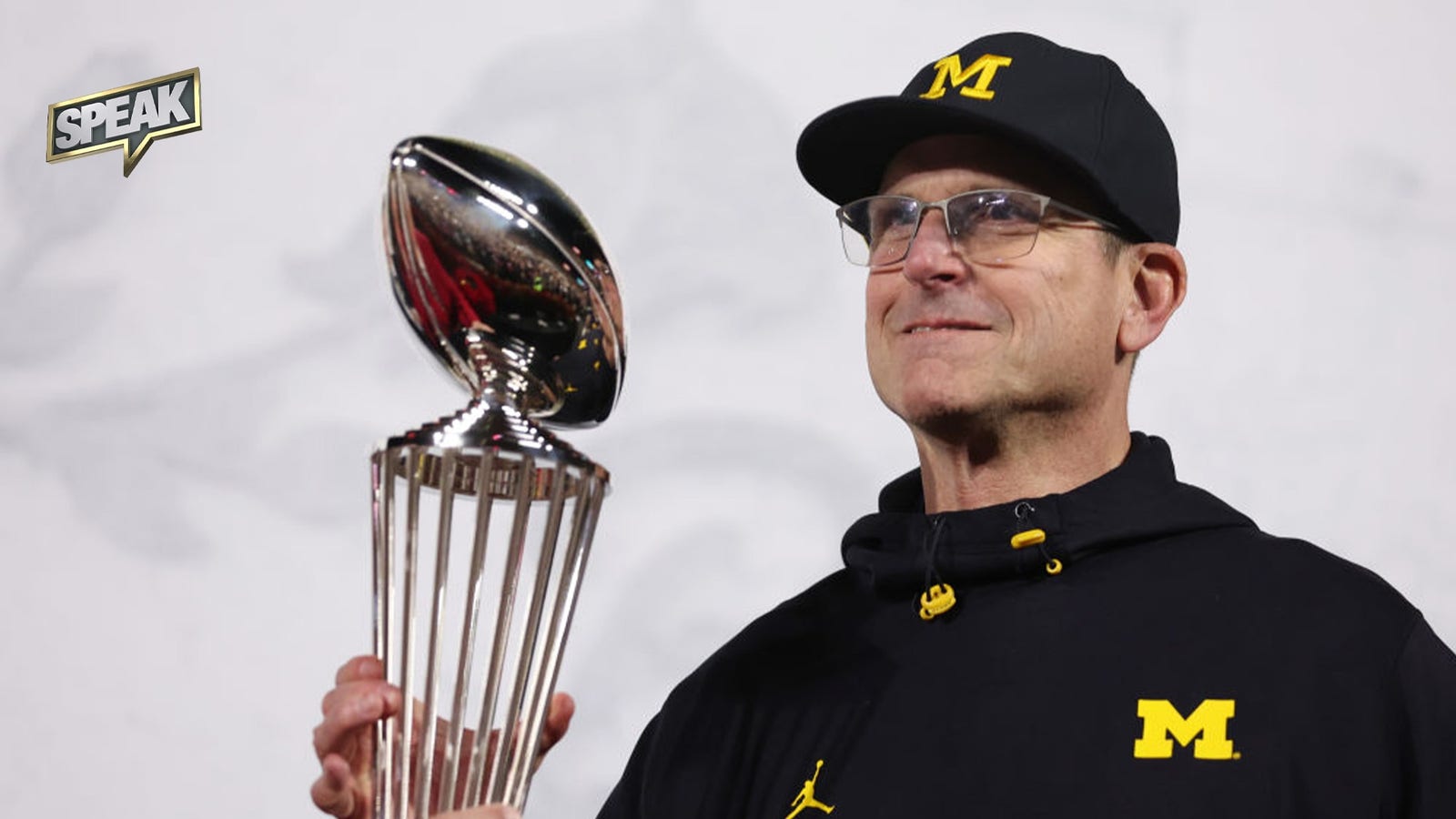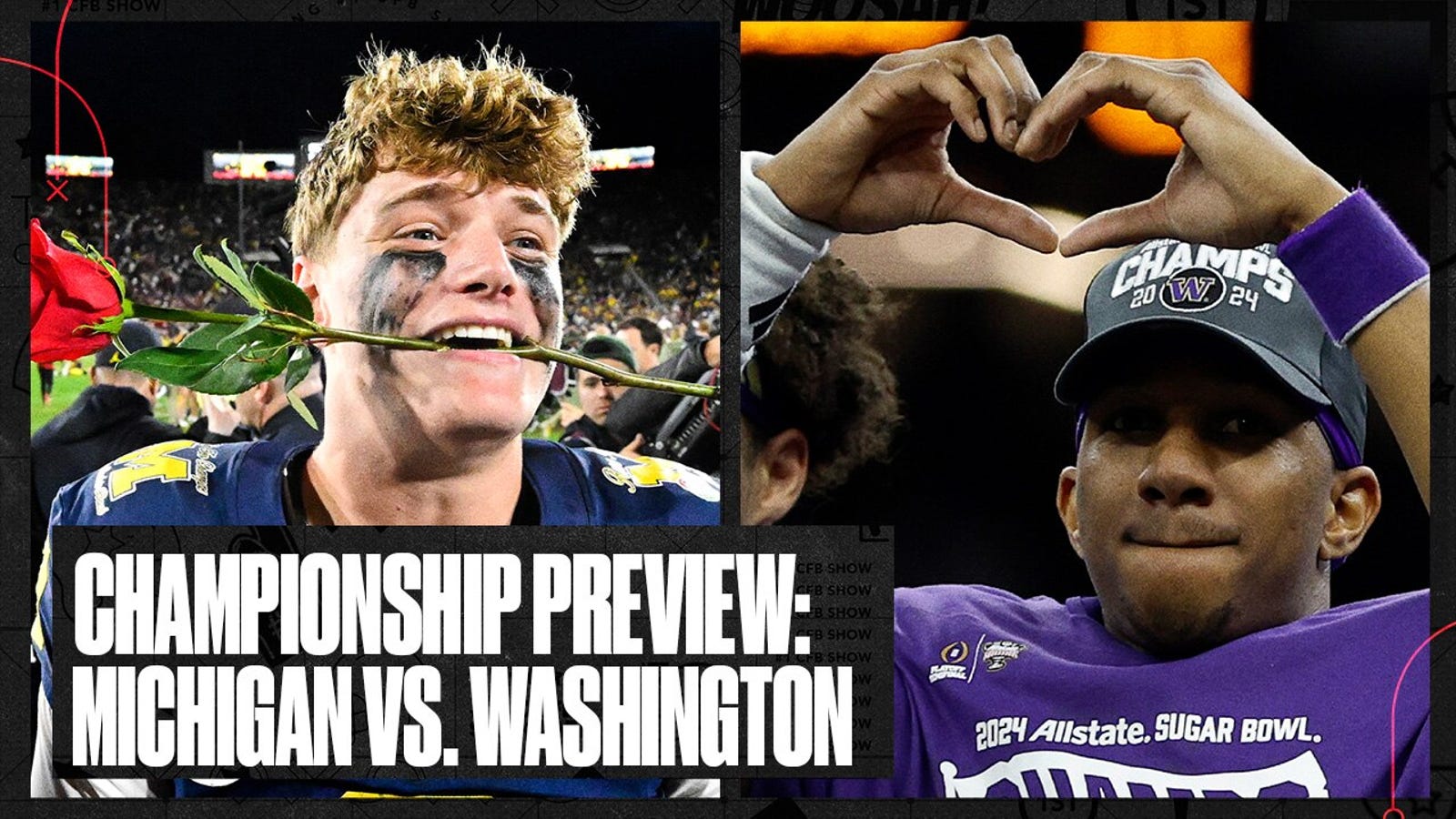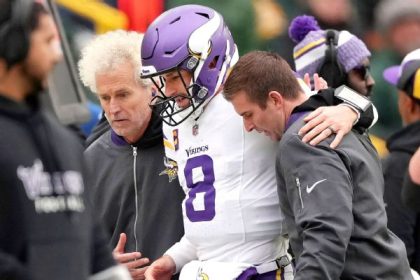HOUSTON — Shortly after his team’s disastrous 2020 campaign lurched to a halt, Michigan head coach Jim Harbaugh crafted an email to the players.
It wasn’t unusual for Harbaugh, who had returned to his alma mater six years prior, to send mass messages from which the Wolverines could cull various meanings and motivations. Those types of distributions happened a few times each year. But this particular note was written as the program stomached its first losing record in six seasons and just the fourth since legendary coach Bo Schembechler took over in 1969, the same year Neil Armstrong walked on the moon. An unsightly 2-4 record from an abbreviated schedule seemed more and more like a nadir.
“Coach Harbaugh sent us a long e-mail saying that we’re going to change this program together,” left guard Trevor Keegan said before the Rose Bowl last week. “And our first team meeting [after that] was either you’re getting on the train and we’re moving, or you’re getting off. Some guys decided to transfer. Since then, we’ve been working our tails off to get where we are and have the success we’ve had.”
The turnaround that followed will be remembered as arguably the greatest stretch in Michigan history, complete with three straight wins over Ohio State, three consecutive Big Ten titles and the program’s first three trips to the College Football Playoff. If Harbaugh succeeds in snapping his alma mater’s 26-year national championship drought — knocking off a similarly unbeaten Washington team to get there — he might well be remembered as the greatest man to ever coach the Wolverines.
ADVERTISEMENT
Yet in so many ways and for so many reasons, this three-year recalibration will reach another inflection point on Monday night, from the uncertainty surrounding Harbaugh’s future to the potential gutting of a roster brimming with future pros. Since 2021, few programs around the country, if any, have paired player development with player retention more effectively than Michigan, whose remarkable talent identification in the transfer portal fortified the depth chart even further. All of Harbaugh’s tinkering and fine-tuning has led the Wolverines to this moment, to NRG Stadium in Houston, to the precipice of the school’s first outright national title since 1948. This whole thing could be the culmination before an offseason of potentially seismic change.
“I definitely feel that,” wide receiver Cornelius Johnson said. “Like it’s a team of destiny or something like that. All three of those years building up to now. That’s what it’s going to come down to on Monday night.”
The most pressing concern for athletic director Warde Manuel is the possibility of losing Harbaugh to the NFL, a perennial game of will-Jim-or-won’t-Jim that was first ignited by the Wolverines’ dramatic turnaround in 2021. Manuel told reporters after the Rose Bowl that he’s trying to convince Harbaugh to sign a contract extension that would reportedly make him the highest-paid coach in the Big Ten, though the offer has been sitting idly for weeks. Each sidestep, deflection and unabashed avoidance by Harbaugh in response to questions about his plans for next season lends greater credence to the idea that he’d prefer to be coaching in the pros, assuming there’s an owner-general manager pairing that will have him.
When asked about his future during Saturday’s media day event in Houston, Harbaugh once again eschewed the chance to commit himself to Michigan and cracked a joke instead: “I’ll gladly talk about the future next week,” he said. “And I hope to have one, how about that? A future? I hope to have one, yes.”
The emergence of offensive coordinator Sherrone Moore as a viable successor affords Manuel a potential in-house replacement capable of maintaining the cultural framework Harbaugh rebuilt over the last three years. But losing Harbaugh to the NFL doesn’t necessarily mean losing Harbaugh alone. Just as he planned to bring certain members of Michigan’s coaching staff to Minnesota had the Vikings hired him following an interview in early 2022, Harbaugh would almost certainly do the same this winter, with defensive coordinator Jesse Minter, tight ends coach Grant Newsome, special teams coordinator Jay Harbaugh and director of strength and conditioning Ben Herbert among the likeliest candidates to depart.
Former co-offensive coordinator Matt Weiss, who overlapped with Minter and former defensive coordinator Mike Macdonald during an earlier stint with the Baltimore Ravens, was at the top of Harbaugh’s list two years ago before he was fired on Feb. 13, 2023, amid an ongoing investigation into alleged computer access crimes at Schembechler Hall. (The Weiss dismissal is unrelated to the sign-stealing operation perpetrated by former analyst Connor Stalions.)
While the contributions from the aforementioned on-field coaches have been integral to Michigan’s turnaround, losing Herbert could thrust the program into a precarious position. Not only is Herbert behind the eye-popping physical transformations that have helped the Wolverines develop into one of the strongest, most powerful rosters in college football, but he’s also the driving force behind the mental training that players and coaches say is even more important to their current run of success. Numerous recruits who have passed through Ann Arbor cite Herbert’s strength and conditioning presentation as one of the most impactful parts of their visits, and one former member of Harbaugh’s staff described Herbert as the second-most important person in the program after the head coach. Harbaugh himself refers to Herbert as an X-factor.
“He’s one of the greatest guys I’ve been around,” ace special teamer Caden Kolesar said. “He’s another part of that transition to the culture that we built. He was a cornerstone in that.”
Part of the reason why Herbert’s influence has been so profound is the length of time across which he’s trained the overwhelming majority of Michigan’s veteran-laden roster the last few seasons, beginning with the group that read Harbaugh’s email and recommitted to the program three years ago. Relatively small draft classes of five selections in 2022 and nine selections in 2023 reflected just how much talent and experience were beginning to stockpile in Ann Arbor when juxtaposed with the program’s 25-3 record in the two preceding seasons combined. The “One More Year Fund” raised more than $135,000 from fans and donors to help sway key players who were weighing decisions to turn pro.
Numerous Wolverines chose to remain on campus for a fifth or sixth season to pursue the national championship in 2023, a list headlined by Keegan, Johnson, inside linebacker Michael Barrett, right guard Karsen Barnhart, right tackle Trente Jones and defensive back Mike Sainristil — all of whom are expected to start against Washington. The coaching staff also added three more plug-and-play graduate students from the transfer portal in starters LaDarius Henderson (left tackle, Arizona State); Drake Nugent (center, Stanford) and Josh Wallace (cornerback, UMass). None of the 35 players who logged more than 150 snaps this season were freshmen.
“It’s been crazy to see,” Jones said. “There’s a lot of guys who could have left. But we all came together. We wanted to win something. So it’s the epitome of [our program’s mantra], ‘Those who stay will be champions.'”
It also explains why Harbaugh expects Michigan to break the NFL record for most players drafted from a single school later this year, an honor that currently belongs to Georgia, which had 15 players chosen in 2022, just a few months after pummeling the Wolverines in the Orange Bowl. Harbaugh believes as many as 20 former Michigan players will hear their names called in April. And while Harbaugh’s number is likely a touch too high, the fact that he probably won’t be far off is a sign of what the program stands to lose after Monday night.
Quarterback J.J. McCarthy could depart. Running backs Blake Corum and Donovan Edwards could both leave. Johnson and fellow wide receiver Roman Wilson aren’t expected to return. As many as eight offensive linemen could move on, including all five starters in the national championship game. Defensive tackles Kris Jenkins and Cam Goode are likely to go. Barrett has exhausted his eligibility. Fellow inside linebacker Junior Colson may exit. So, too, might edge rushers Braiden McGregor and Jaylen Harrell. Sainristil and Wallace could lighten the cornerback room. Safeties Rod Moore and Makari Paige both have decisions to make as well.
And those are just the players who might be chosen in the NFL Draft. Others might opt to enter the transfer portal, especially if Harbaugh and some of his assistants bid Michigan farewell. For the first time since reaching the College Football Playoff in 2021, the Wolverines might need a year to rebuild rather than merely a few months to reload. The marquee players who remain won’t have the same level of depth around them.
“There will still be some players coming back who were leaders on this team and experienced players,” Kolesar said. “[Guys] who really have gotten to step into that leadership role and maybe be a little bit more vocal than they have been in the past and lead by example, you know?
“So it’s just continuing [where this team left off] because you can’t let it slip. It’s easy to just let it slip. You’re like, ‘Oh, we won whatever last year, we’re good. It’s just gonna happen.’ But it just doesn’t happen. The culture is something that you work on every single day.”
Just like Harbaugh’s email said way back when.
Michael Cohen covers college football and basketball for FOX Sports with an emphasis on the Big Ten. Follow him on Twitter at @Michael_Cohen13.
COLLEGE FOOTBALL trending

Get more from College Football Follow your favorites to get information about games, news and more














